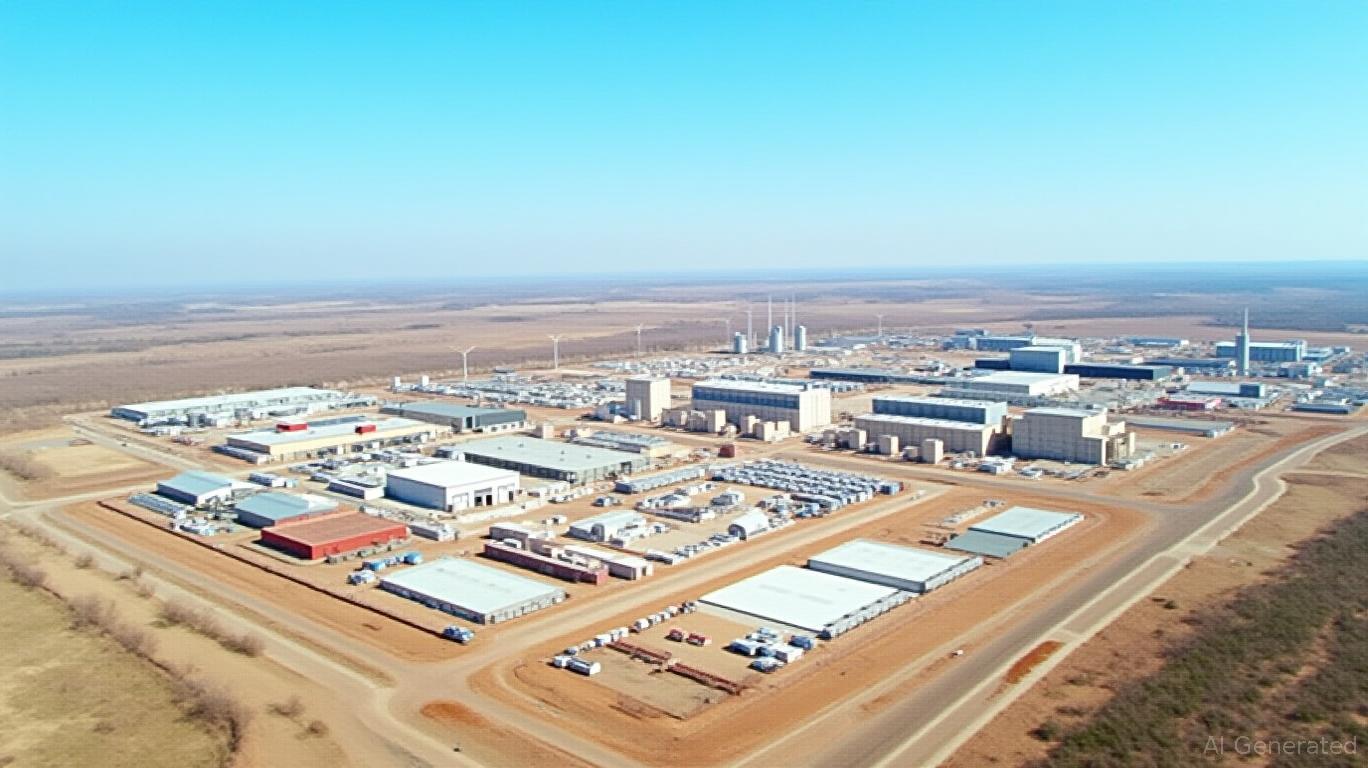Arcosa's Strategic Transformation: Navigating Deleveraging and Margin Growth Amid Infrastructure Tailwinds
Arcosa, Inc. (ARCS) has embarked on a strategic transformation aimed at reducing cyclicality, improving profitability, and deleveraging its balance sheet post-acquisition. With the Stavola acquisition and targeted divestitures, the company is positioning itself to capitalize on infrastructure and renewable energy tailwinds while pursuing a clear 18-month roadmap to reduce net leverage to 2.0–2.5x. Here's how Arcosa's moves could unlock shareholder value—and where risks lie.

The Stavola Acquisition: A Strategic Shift to Reduce Cyclicality
The $1.2 billion acquisition of Stavola Holding Corporation in late 2024 marked a pivotal step for
. Stavola's construction products business, while seasonally volatile, has been integrated to diversify revenue streams and reduce reliance on cyclical sectors like transportation. The move also allowed Arcosa to divest its low-margin steel components business, streamlining operations and sharpening focus on higher-margin segments such as utility structures and wind towers.The results? While Stavola's Q1 performance was seasonally weak, its contribution to the Construction Products segment's 5% revenue growth (excluding divestitures) highlights long-term potential. More importantly, the divestiture of the steel business enabled a 190 basis point margin expansion in Adjusted EBITDA to 17.4%, underscoring the strategic benefits of shedding non-core assets.
Margin Expansion: A Structural Improvement Story
Arcosa's margin gains are not just cyclical—they're structural. The Engineered Structures segment, fueled by the Stavola and Ameron acquisitions, saw Adjusted EBITDA margins surge 650 basis points to 18.2% in Q1 2025. This segment's $1.09 billion backlog (59% to be fulfilled in 2025) and strong demand for utility poles and wind towers provide a clear visibility into future cash flows. Even the Construction Products segment, despite seasonal headwinds, demonstrated resilience, with margin expansion in legacy operations.
Deleveraging Roadmap: Progress and the Path Ahead
Arcosa's leverage ratio stands at 2.9x Net Debt to Adjusted EBITDA as of Q1 2025, down from 3.4x in early 2024. The company aims to reduce this to 2.0–2.5x within 12 months—a target supported by its backlog-driven cash flow and operational discipline. Key levers include:
- Free Cash Flow Generation: While Q1 free cash flow was negative at $(29.7) million due to working capital swings, management expects sequential improvements. The full-year 2025 Adjusted EBITDA guidance of $545–$595 million (up 30% year-over-year) provides a solid base for debt reduction.
- Liquidity Strength: With $867.8 million in liquidity (including $167.9 million in cash), Arcosa has ample flexibility to manage debt repayments without compromising growth.
- Tax Benefits: The timing of tax credit sales in Q1 highlighted cash flow volatility, but these one-time items are unlikely to recur, stabilizing cash conversion in subsequent quarters.
Infrastructure and Renewables: Tailwinds to Sustain Growth
Arcosa's segments are well-positioned to benefit from secular trends. The U.S. infrastructure spending boom, including grid modernization and renewable energy projects, is driving demand for utility poles, wind towers, and barges. The Transportation Products segment's $333.6 million backlog—extending into 2026—reflects this, while Engineered Structures' 59% backlog visibility for 2025 ensures steady revenue flow.
Policy support remains critical. The pending clarity on federal renewable energy incentives, such as the Inflation Reduction Act, could unlock additional demand for wind towers. While uncertainty exists, Arcosa's diversified exposure to utilities, construction, and
mitigates sector-specific risks.Risks and Challenges
- Seasonality and Working Capital: Stavola's Q1 drag highlights the need for tighter receivables management. A repeat of the $77.6 million receivables spike could strain cash flow.
- Policy Delays: A slowdown in renewable energy approvals could delay backlog conversions, impacting EBITDA growth.
- Interest Expense Pressure: Debt servicing costs rose 250% year-over-year to $28.3 million in Q1, squeezing net income. Lower leverage will help reduce this overhang.
Investment Implications: A Play on Deleveraging and Infrastructure
Arcosa's stock (ARCS) has underperformed peers in 2025 amid near-term cash flow volatility, but the underlying story remains compelling. The deleveraging path is clear, and margin expansion is structural, not cyclical. Key catalysts include:
- Backlog Execution: Converting the $1.09 billion Engineered Structures backlog into revenue will boost free cash flow.
- Leverage Reduction: Achieving the 2.0–2.5x target by mid-2026 could unlock shareholder returns, such as buybacks or dividends.
- Policy Clarity: A green light on renewable incentives could accelerate wind tower demand, driving EBITDA upside.
The Bottom Line: Arcosa's strategic moves—acquisition of Stavola, divestiture of non-core assets, and focus on infrastructure—position it to deliver sustained margin growth and deleveraging. While near-term headwinds exist, the company's backlog visibility, liquidity, and secular tailwinds make it a compelling long-term play. Investors should monitor execution on free cash flow and policy developments, but the path to unlocking shareholder value is clear.

Comments
No comments yet